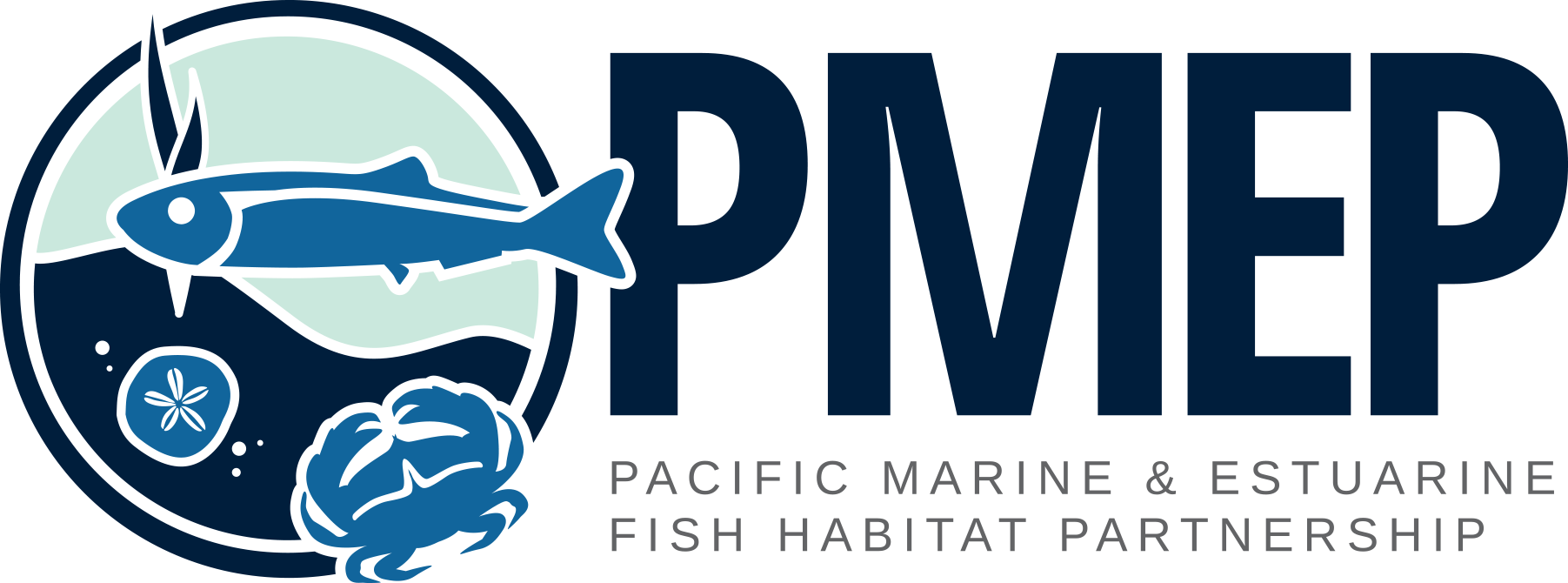PMEP’s new West Coast Estuary and Nearshore Habitat Viewer is available now. Launched at the recent American Fisheries Society meeting, this new interactive tool combines our estuary datasets with our new nearshore habitat datasets into one easy-to-use platform. The Viewer supports users importing their own spatial data as well as data readily available at ArcGIS Online. Combine these with the PMEP data layers to compare, overlay, and synthesize information to support resource management, habitat conservation and restoration goal setting. PMEP data layers are also available for download. Find the Viewer and PMEP data HERE.
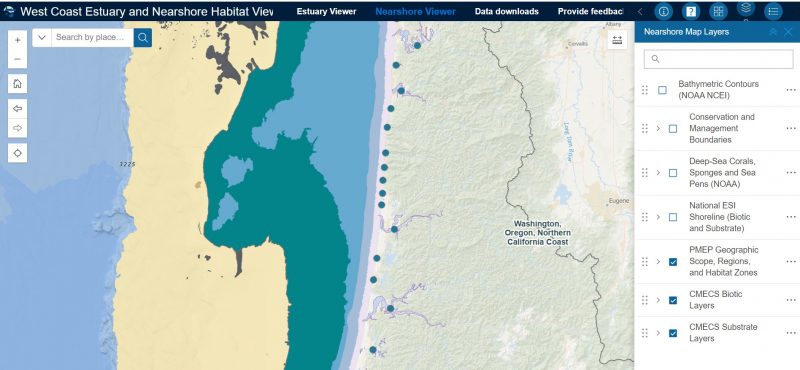
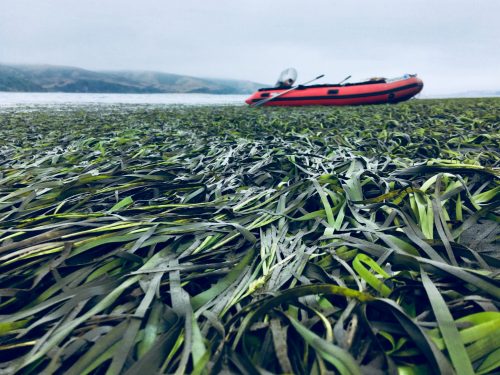
- May 29, 2021
- Joan Drinkwin
- Data and Assessments, Publication
- 0 comments
PMEP is proud to announce the release of Eelgrass Restoration on the U.S. West Coast: A Comprehensive Assessment of Restoration Techniques and Their Outcomes. Eelgrass is an important foundation species along the U.S. West Coast, supporting a suite of ecosystem services and functions and providing food and shelter for many fishes and invertebrates. In 2018, PMEP published Eelgrass Habitats on The U.S. West Coast: State of the Knowledge of Eelgrass Ecosystem Services and Eelgrass Extent and compiled a geodatabase of eelgrass presence/absence and current and historic extent of eelgrass in 444 estuaries along the U.S. West Coast. In 2020, PMEP commissioned this new report to synthesize eelgrass restoration project successes along the U.S. West Coast to identify best practices for eelgrass restoration and mitigation. The authors of the report reviewed and synthesized data from 51 eelgrass restoration (non-mitigation and mitigation) projects from California, Oregon, and Washington. They identified those methods and approaches that resulted in successful restoration. The report was prepared by Kathryn Beheshti and Melissa Ward and was funded by Pew Charitable Trusts with support from the Friends of the South Slough Reserve.
Access the project webpage HERE.
Photo credit: Melissa Ward
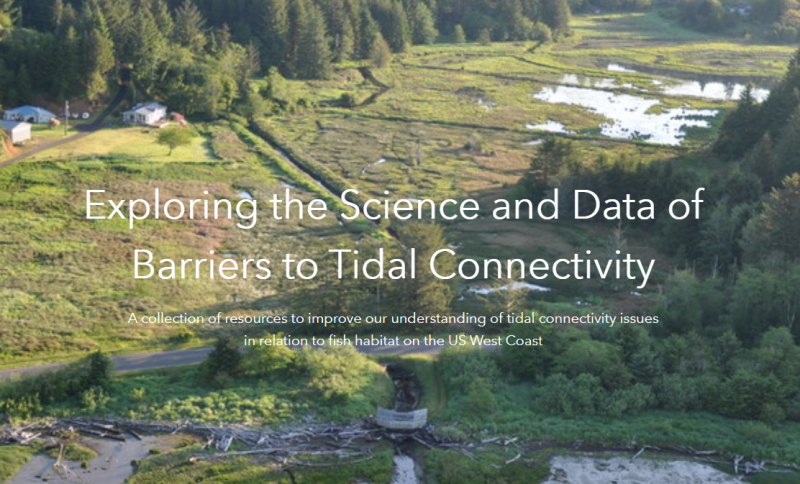
- April 23, 2021
- Joan Drinkwin
- Announcement, Data and Assessments
- 0 comments
PMEP, in collaboration with the California Fish Passage Forum and the Pacific Lamprey Conservation Initiative, has launched a new Barriers to Tidal Connectivity data hub of resources developed through a collaborative project to improve our understanding of tidal connectivity issues along the US West Coast.
The data hub includes a data catalog of West Coast datasets of culverts, tide gates, levees and dikes, railways, and roads as well as maps identifying tidally restricted areas. This innovative data catalog assembles datasets managed by a variety of agencies including California’s Passage Assessment Database (PAD), Oregon’s Fish Passage Barriers, Washington Department of Fish and Wildlife Fish Passage Inventory, and the Washington Levee Inventory. Viewers can access all these datasets and visualize the extent of barriers to tidal connectivity for purposes of restoration, research, and planning.
Through the data hub, you can also access copies and recordings of presentations given at the recent Barriers to Tidal Connectivity Symposium held October 28, 2020. And other resources and reports can be accessed through the hub.
This data hub is a product of a collaborative effort by the three fish habitat partnerships made possible with generous support from the Association of Fish and Wildlife Agencies.
You can find out more on Barriers to Tidal Connectivity on the PMEP website by clicking on the projects tab, or you can head directly to the data hub here.
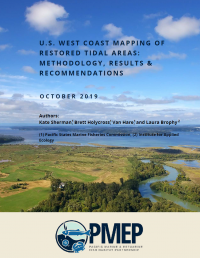
- March 10, 2020
- Kate Sherman
- Data and Assessments, Publication
- 0 comments
The Pacific Marine and Estuarine Fish Habitat Partnership (PMEP) is pleased to release its Restored Tidal Estuaries Report. The report documents the methods and results of a mapping project undertaken to update its tidal wetland loss assessment to include areas where tidal connectivity and inundation have been restored. PMEP mapped 127 tidal re-connection projects across the West Coast, identifying 8,085 hectares (19,978 acres) of restored tidal wetland habitat. The project focused on mapping restored areas that were shown as “lost” within the 55 estuaries included in PMEP’s original tidal wetland loss assessment. This mapping effort resulted in 2.3% of tidal wetlands that were previously classified as “lost” being reclassified as “restored,” while 82.7% of tidal wetlands remained classified as “lost.” These results illustrate both the successes of restoring tidal connectivity and the potential for future efforts to re-connect important fish habitat across the West Coast. You can download the full report here. You can view the updated data layers showing restored tidal estuaries here.
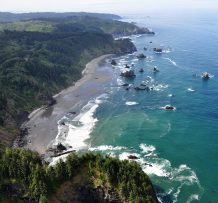
- January 7, 2020
- Joan Drinkwin
- Data and Assessments
- 0 comments
PMEP is expanding its spatial data framework to include nearshore areas and developing a ‘State of the Knowledge’ report on West Coast nearshore habitats.
PMEP is seeking spatially interpreted data (in either vector or raster format) identifying nearshore fish and invertebrate habitats (substrate, biotic, and water column component). We are placing a priority on datasets with a large spatial footprint that consistently map a habitat feature or features for large segments of the coast (preferably 10’s to 100’s of kilometers). For this project, PMEP is identifying the core nearshore as the upper end of the splash zone to -30m depth. In addition, PMEP is requesting data that extends beyond -30m to -100 (Seaward Zone) since many nearshore fish and invertebrates use habitats deeper than -30m. We are not currently looking for data from estuaries, however, we are looking for data for the nearshore of Puget Sound while recognizing that the Sound itself is classified as an estuary. For a full description of this request and a list of datasets already in hand, see PMEP_NearshoreDataCall.
If you would like to contribute to this effort, contact PMEP Data Steward, Kate Sherman, at info@pacificfishhabitat.org or 503-595-3100 by January 31, 2020.
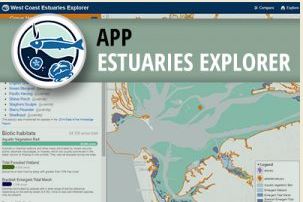
- April 15, 2019
- Joan Drinkwin
- Data and Assessments
- 0 comments
The Pacific Marine and Estuarine Fish Habitat Partnership’s Estuaries Explorer data tool was recently added to the NOAA Digital Coast website. The Estuaries Explorer application enables you to explore the estuaries of Washington, Oregon, and California and compare them to each other. You can combine dynamic filters and an interactive map to find specific estuary types you are interested in, or estuaries that contain focal species of interest. You can explore estuaries in more detail and find a specific estuary by name or location. You can also zoom to a specific area on the map to compare estuaries and the filters automatically update to show you the number of estuaries in that area that meet different conditions. The Estuaries Explorer tool integrates a wide variety of datasets from along the West Coast, providing restoration practitioners, researchers, and resource managers with comprehensive estuary data for improved decision-making. Find it on the NOAA Digital Coast website here or access it from the PMEP website here.
